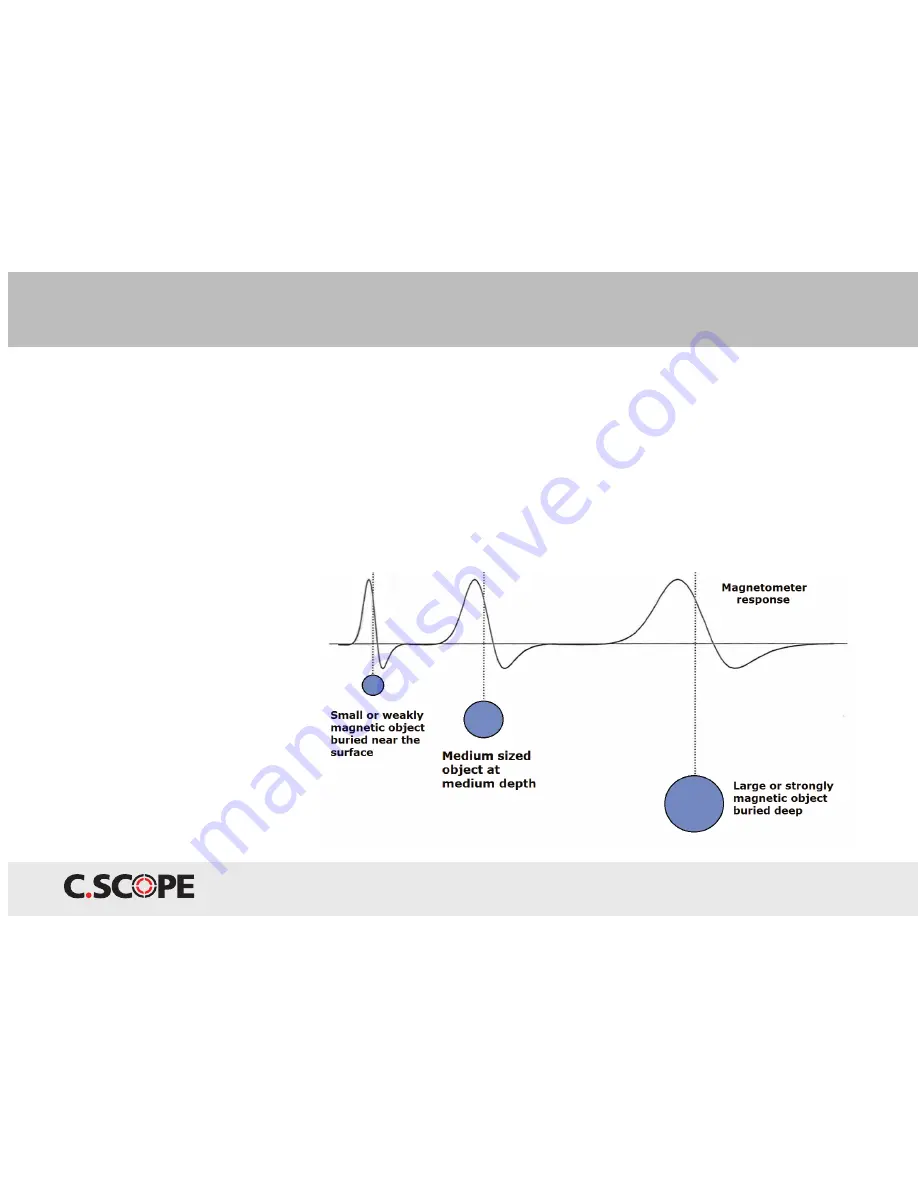
16
Application Note 3. Depth
It is sometimes possible to judge the depth of an object
by the “shape” of the response. Small, shallowly buried objects
may produce the same strength of signal as a larger, more
deeply buried object, but the deep object will produce a broad
peak, while small shallow objects produce sharper, narrower
peaks as the end of the sensor tube is moved over them.
Some differentiation between “surface trash” and deeper
targets may be possible.
Figure 5 Magnetometer response
for objects buried at different depths.
The amplitude of the response
may be the same, but the width
of the response may be broader,
indicating that the object is further
away from the sensor.
Cluttered environments with many services running close
together and crossing one another may produce a confused
pattern of responses, and additional methods of identification
may be required in these circumstances (for other locating
products see www.cscopelocators.com).
In areas of past industrial or domestic use the soil can
become contaminated with pieces of iron and steel which
makes detection difficult. It is recommended that the search
is repeated at a lower sensitivity or with the M-Scan raised
0.5m (1.5 ft) so small objects close to the surface are
not detected.
Summary of Contents for M-SCAN
Page 1: ......



















